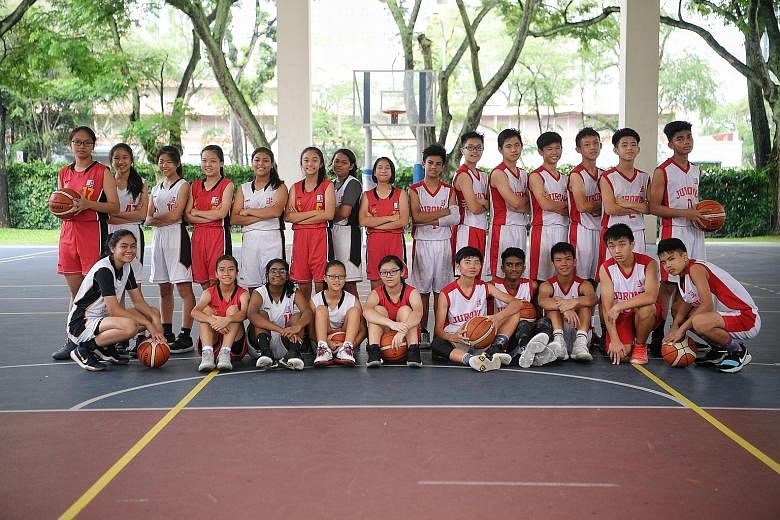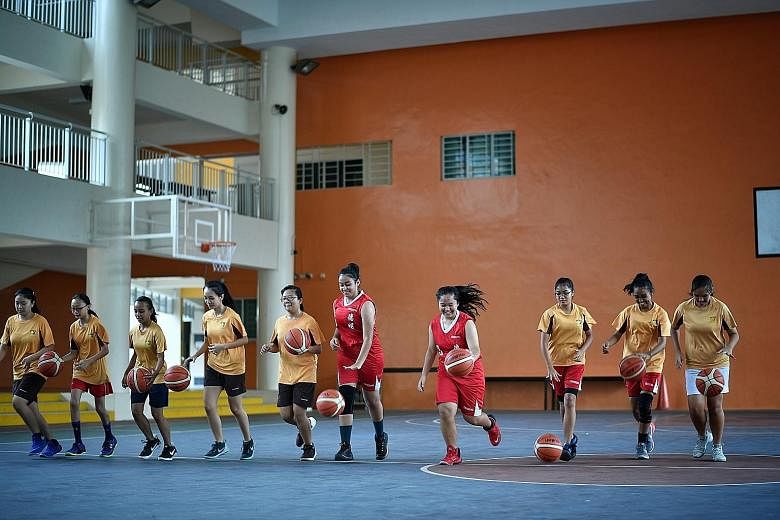Chinese students play basketball, Malays football and Indians hockey.
The issue of co-curricular activities (CCAs) attracting specific ethnicities was raised by Deputy Prime Minister Tharman Shanmugaratnam in September at the inaugural Majulah Lecture dialogue at the Nanyang Technological University.
And schools and coaches contacted by The Straits Times concede that some sports do draw more players from certain races.
In calling for "deepening multiculturalism from young", Mr Tharman flagged an observation: "I think our CCAs are too ethnically defined in practice, in ways that sometimes puzzles. Football today is different from what it was in the 1970s and 1980s - you look at our national team. All very good players. But it used to be a much more multiracial team in those days."
He noted that some sports such as volleyball, basketball and table tennis tend to strike people as a "Chinese" game.
Observers said the mindset that some sports are associated with specific ethnic groups still persists, and it is important that parents do not just impose their own interests on their children.
Mr Tohari Paijan, 60, a primary school football coach, said Malay families are mostly interested in football and sepak takraw.
He added: "They tell their kids, 'I want you to be the next Fandi Ahmad'. They don't say, 'Are you going to be the next Joseph Schooling?'"
Mr Sarika Prasad, 58, a cricket coach in two boys' schools, tries to encourage students to take up sports which they might not have originally considered.
He said: "If I see a Chinese boy who is good in cricket, I will ask him to join but sometimes he will say, 'let me ask my parents first'."
SHAPING A DIVERSE SOCIETY
Experts agree that schools play an important role in shaping multiculturalism - the ability to share the world with others who are different.
The benefit, said Associate Professor Mark Baildon from the National Institute of Education's humanities and social studies education academic group, is that young people "are less likely to develop rigid, incorrect or fixed notions about people who are different from them", adding that attitudes about culture and differences are set at an early age.
A spokesman for the Ministry of Education said it emphasises the need for students to learn to be "sensitive and socially responsible on issues pertaining to race and religion" and CCAs provide a common space for friendships among students of diverse backgrounds.
CCA is also an opportunity to develop cultural awareness.
Jurong Secondary basketball player Celine Ng, 14, said: "Once at a team bonding event, a team member learnt that we shouldn't mix utensils for halal food with those for non-halal food."
For Dunman Secondary basketball player Haseenah Mohamed Ariffin, 14, the bonding became clear during the fasting month when her teammates encouraged her.
She said: "It gets really tiring, and the only thing I want to do is drink water but I can't. But they would say don't give up, just keep pushing on."
BETTER DIVERSITY IN SCHOOLS
Schools that The Straits Times spoke to said racial mix in certain sports is improving.
Take Dunman Secondary School, for instance.
The school's teacher-in-charge of basketball Leong Sen Tieng, 43, said: "All along, basketball was perceived as a Chinese sport but now not so much, maybe because of the National Basketball Association (in the United States), which raises the profile of the sport."
Her school's four teams are made up of 12 to 15 students, and Chinese students account for only half the players.
At Jurong Secondary School, the lower secondary girls' basketball team is made up of eight Chinese, three Malays and one Indian, while the boys team has nine Chinese, two Malays and one Indian.
This is the same experience with swimming, said Mr Kuah Kar Huat, 49, water polo coach at Outram Secondary School. There are more Malays and Indians taking up swimming now, compared with the 1980s when it was dominated by Chinese, he added.
His B Division team of more than 20 boys currently has three Malays and one Indian, while the rest are Chinese. Previously, there was only one non-Chinese swimmer.
While it is important to consider a good racial mix, it is even more important to ensure that students are given every chance to pursue their interest.
Dr Nick Aplin, senior lecturer of physical education and sports science education academic group at NIE, said: "It is more about providing opportunities for anyone to be included in an activity of his or her interest."
Agreeing, Ms Ong Wei Chen, 37, Jurong Secondary's subject head of physical education, said: "To us, it's about the students' interests, talent and passion."



